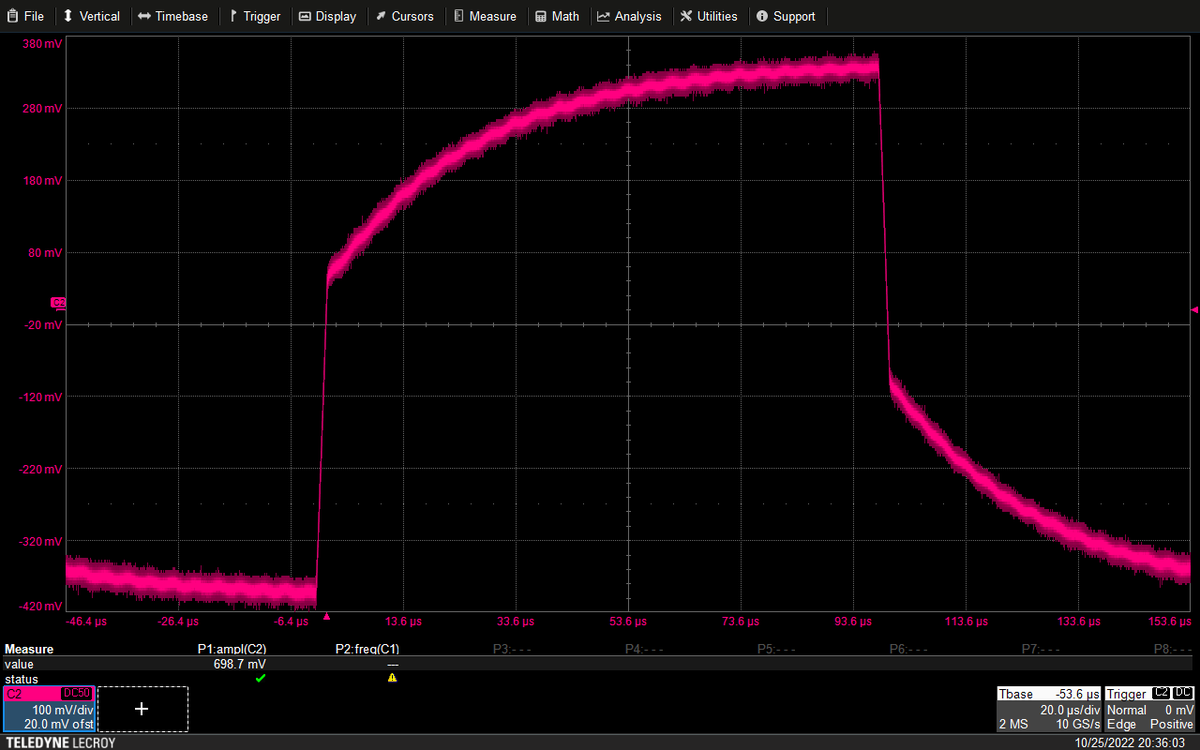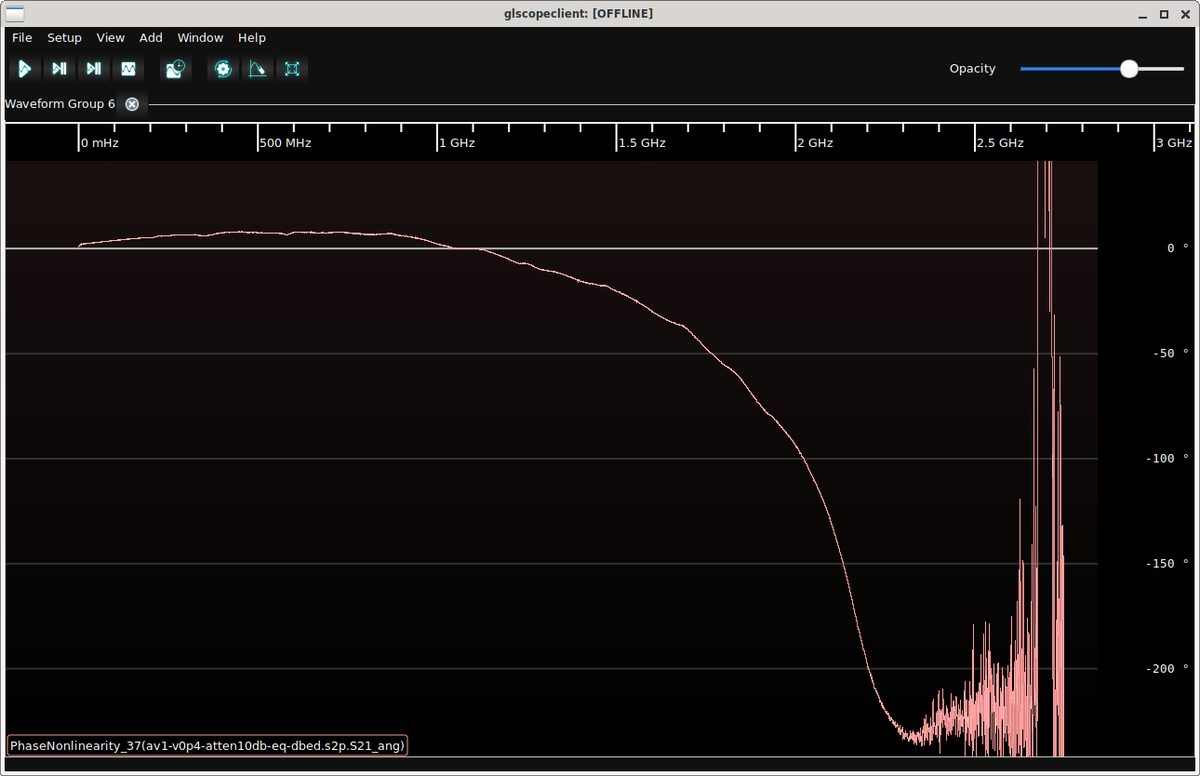Assembled the (v0.6) AKL-AV1 prototype! Characterization results in this thread.
For those of you just tuning in, the AV1 is an open hardware 1.5 GHz class, high impedance, solder-in, single ended active voltage probe (5MΩ || 350 fF, 10x attenuation) that runs on 5.5V DC.
For those of you just tuning in, the AV1 is an open hardware 1.5 GHz class, high impedance, solder-in, single ended active voltage probe (5MΩ || 350 fF, 10x attenuation) that runs on 5.5V DC.

First step is low frequency trimming. This adjusts the DC path (OPA210) and AC path (BUF802) to have the same gain.
Seen here before and after.

Seen here before and after.


Next, high frequency trimming. The JFET amplifier stage has a 2.4 pF input capacitance so to reduce loading on the DUT there's a 5:1 R-C divider in front of it.
Shunt path is a 1MΩ terminator across the BUF802, series path is 4MΩ in parallel with a 250 - 750 fF trim cap.


Shunt path is a 1MΩ terminator across the BUF802, series path is 4MΩ in parallel with a 250 - 750 fF trim cap.



All trimmed up. While it's still on the fixture, I swapped out the function generator for one of Leo Bodnar's fast pulse generators.
Rise time (including cable losses) is almost identical to my 1.5 GHz LeCroy ZS1500. A little bit of overshoot/ring but way better than last rev.

Rise time (including cable losses) is almost identical to my 1.5 GHz LeCroy ZS1500. A little bit of overshoot/ring but way better than last rev.


Soldered onto the PRBS generator board for some eye pattern work on a PRBS-31 at 1.25 Gbps.
Pretty good. A tiny bit of overshoot but way less than the previous revision (Mini-Circuits LFCG, vs the 4th order discrete Bessel used here).

Pretty good. A tiny bit of overshoot but way less than the previous revision (Mini-Circuits LFCG, vs the 4th order discrete Bessel used here).


Next up, VNA S21 response of the probe head (no cable, but including losses of the SMA-SMPM adapter and PCF200 fixture).
Better than +/- 0.2 dB flatness from DC to 500 MHz, +/- 0.4 dB to 1 GHz. But then it falls off faster than intended.
Better than +/- 0.2 dB flatness from DC to 500 MHz, +/- 0.4 dB to 1 GHz. But then it falls off faster than intended.

Design goal was for -3 dB BW of 1.8 GHz on the filter and system bandwidth in the 1.5 to 2.0 GHz range. We fell slightly short at 1.32.
The inductors I'm using are performing slightly worse than sim in another design, so I might try tweaking their values slightly.
The inductors I'm using are performing slightly worse than sim in another design, so I might try tweaking their values slightly.
But I have to be careful because of how good the phase response is with the current filter. Within +/- 10 degrees of perfectly linear from DC to 2 GHz. 

By comparison, the previous rev using the Mini-Circuits filter (which isn't optimized for phase linearity in the transition region) is a whopping 93 degrees off a linear response at 2 GHz. 

This phase nonlinearity clearly shows up in the eye pattern of the old v0.4 probe: the rise time is a bit slower, then there's a big overshoot as the delayed second harmonic of the edge hits. 

Comparing S21 magnitude of v0.6 (red) and v0.4 (blue), we see that v0.4 has significantly higher BW (about 500 MHz more).
So if I can shift the cutoff frequency of the new Bessel filter a bit right without sacrificing linearity, I'll have a winner.
So if I can shift the cutoff frequency of the new Bessel filter a bit right without sacrificing linearity, I'll have a winner.

In any case, I'm now confident that the v0.6 board spin is basically final.
There will probably be BOM tweaks to the filter components to try and squeeze out a bit more BW, but I'm not seeing any reason to mess with the layout.
There will probably be BOM tweaks to the filter components to try and squeeze out a bit more BW, but I'm not seeing any reason to mess with the layout.
• • •
Missing some Tweet in this thread? You can try to
force a refresh














